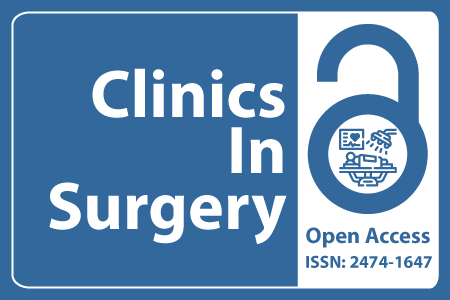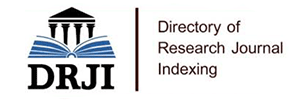
Journal Basic Info
- Impact Factor: 1.995**
- H-Index: 8
- ISSN: 2474-1647
- DOI: 10.25107/2474-1647
Major Scope
- Thoracic Surgery
- Orthopaedic Surgery
- Robotic Surgery
- Endocrine Surgery
- Pediatric Surgery
- Gynecological Surgery
- Minimally Invasive Surgery
- General Surgery
Abstract
Citation: Clin Surg. 2019;4(1):2511.Research Article | Open Access
Somatotropic Axis (GH/IGF-1) and Lipid Metabolism after Bariatric Surgery in Morbidly Obese Non-Diabetic Patients
Maria E Barmpari1*, Christos Savvidis1, Maria Natoudi2, Georgios Zografos2, Eleni Zografos2, Emmanouil Leandros2 and Konstantinos Albanopoulos2
1Department of Endocrinology and Metabolism, Hippokration General Hospital of Athens, Greece
2Department of Laparoscopic Surgery, University of Athens School of Medicine, Greece
*Correspondance to: Maria E Barmpari
PDF Full Text DOI: 10.25107/2474-1647.2511
Abstract
Background: Growth Hormone (GH) secretion and Insulin-like Growth Factor-1 (IGF-1) production are markedly suppressed in morbidly obese patients. The postoperative variation of somatotropic axis (GH/IGF-1) and its impact in anthropometric parameters and lipid metabolism of morbidly obese non diabetic patients is the objective of this prospective, clinical study. Methods: 123 morbidly obese non diabetic patients with a median Body Mass Index (BMI) 47.61 Kg/m2 were followed up at 1, 6 and 12 months after Laparoscopic Sleeve Gastrectomy (LSG) or Laparoscopic One Anastomosis Gastric Bypass (LOAGB). Weight loss (expressed as excess weight loss percent, EWL%), waist and hip circumference, serum GH, IGF-1 adjusted with age, total Cholesterol (CHOL), High Density Lipoprotein (HDL), Low Density Lipoprotein (LDL), Triglycerides (TG), Very Low Density Lipoprotein (VLDL), Apolipoprotein A1 (ApoA1), Apolipoprotein B (ApoB) and Lipoprotein (a) [Lp(a)], were analyzed in fasting morning serum samples. Results: One month after LSG: BMI 41.6 kg/m2 (p<0.001) and LOAGB: BMI 43.4 kg/m2 (p<0.001). In the LOAGB group, significantly reduced hip circumference and ApoB in relation to an increase in GH levels were reported. Six months after LSG, significantly decreased ApoB levels related to an increase in GH levels were found, while in the LOAGB group, GH variations were positively correlated with EWL% and negatively correlated with CHOL levels. One year after LSG: BMI 30 kg/m2, EWL% 70.8% (p<0.001) and LOAGB: BMI 29.9 kg/m2, EWL% 72.3% (p<0.001). Only in LOAGB, the increase in GH levels was negatively correlated with Lp (a) levels and positively with ApoA1 levels. Conclusion: GH levels seem to be improved after bariatric surgery and consequently lipid parameters, in particular Lp (a), which is difficult to be controlled with a pharmacologic intervention. LOAGB and LSG represent two long-term effective bariatric surgeries in which weight loss related to the increase in GH levels ameliorates metabolic profile and reduces cardiovascular risk factors in morbidly obese non diabetic patients.
Keywords
Growth hormone; Insulin-like growth factor-1; Lipid metabolism; Obesity; Bariatric surgery
Cite the article
Barmpari ME, Savvidis C, Natoudi M, Zografos G, Zografos E, Leandros E, et al. Somatotropic Axis (GH/IGF-1) and Lipid Metabolism after Bariatric Surgery in Morbidly Obese Non-Diabetic Patients. Clin Surg. 2019; 4: 2511..













